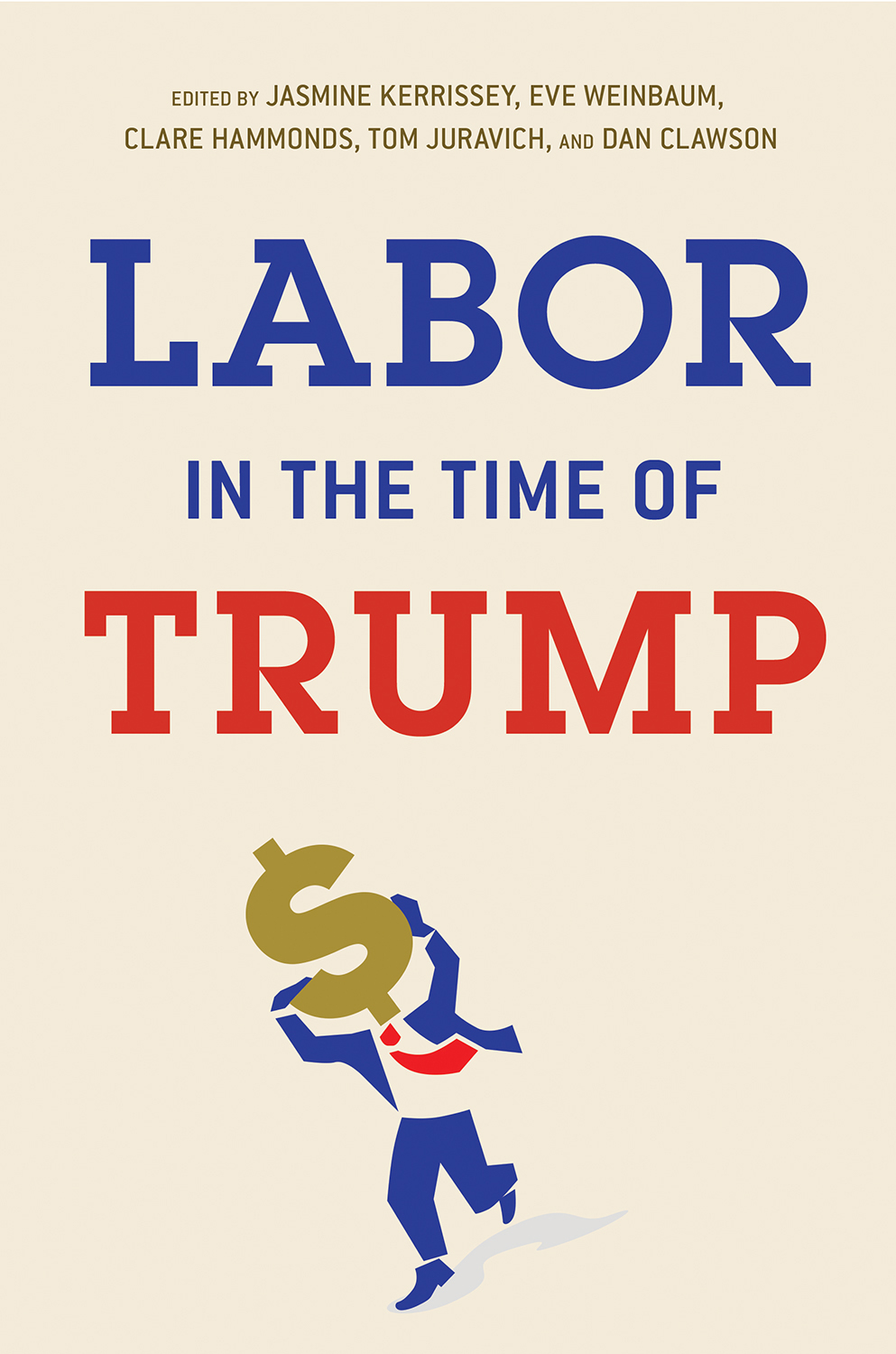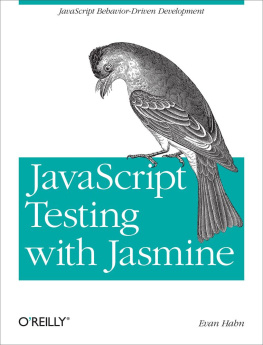Jasmine Kerrissey - Labor in the Time of Trump
Here you can read online Jasmine Kerrissey - Labor in the Time of Trump full text of the book (entire story) in english for free. Download pdf and epub, get meaning, cover and reviews about this ebook. year: 2020, publisher: Lightning Source Inc. (Tier 3), genre: Politics. Description of the work, (preface) as well as reviews are available. Best literature library LitArk.com created for fans of good reading and offers a wide selection of genres:
Romance novel
Science fiction
Adventure
Detective
Science
History
Home and family
Prose
Art
Politics
Computer
Non-fiction
Religion
Business
Children
Humor
Choose a favorite category and find really read worthwhile books. Enjoy immersion in the world of imagination, feel the emotions of the characters or learn something new for yourself, make an fascinating discovery.

- Book:Labor in the Time of Trump
- Author:
- Publisher:Lightning Source Inc. (Tier 3)
- Genre:
- Year:2020
- Rating:4 / 5
- Favourites:Add to favourites
- Your mark:
- 80
- 1
- 2
- 3
- 4
- 5
Labor in the Time of Trump: summary, description and annotation
We offer to read an annotation, description, summary or preface (depends on what the author of the book "Labor in the Time of Trump" wrote himself). If you haven't found the necessary information about the book — write in the comments, we will try to find it.
Labor in the Time of Trump — read online for free the complete book (whole text) full work
Below is the text of the book, divided by pages. System saving the place of the last page read, allows you to conveniently read the book "Labor in the Time of Trump" online for free, without having to search again every time where you left off. Put a bookmark, and you can go to the page where you finished reading at any time.
Font size:
Interval:
Bookmark:

Edited by Jasmine Kerrissey,
Eve Weinbaum, Clare Hammonds,
Tom Juravich, and Dan Clawson
ILR PRESS
AN IMPRINT OF CORNELL UNIVERSITY PRESSITHACA AND LONDON
This book is dedicated to Dan Clawson, who never stopped laying the groundwork for the next upsurge.
- Jasmine Kerrissey, Eve Weinbaum, Clare Hammonds, Tom Juravich, and Dan Clawson
- Nancy MacLean
- Gordon Lafer
- Bill Fletcher Jr. and JosAlejandro La Luz
- Jon Shelton
- Sarah Jaffe
- Donald Cohen
- Lara Skinner
- Shannon Gleeson
- Cedric Johnson
- MaryBe McMillan
- Jennifer Klein
- Kyla Walters
Jasmine Kerrissey, Eve Weinbaum, Clare Hammonds, Tom Juravich, and Dan Clawson
After being dismissed as irrelevant for a decade, the labor movement has featured prominently in news headlines as this volume goes to press. There has been plenty of bad news. Right-to-work legislation was passed in Michigan, Indiana, West Virginia, Wisconsin, and Kentucky. The Supreme Courts decision in Janus v. AFSCME threatens to undermine public-sector unions. In the private sector, union density continued its long decline from 35 percent in the mid-1950s to under 7 percent in 2018 (Bureau of Labor Statistics 2019). The 2010 Citizens United decision, permitting unlimited corporate contributions to political campaigns, has crippled unions political clout.
At the same time, there has been a wave of good news for working people and their movements. Teachers in West Virginia, Kentucky, Oklahoma, North Carolina, Arizona, Colorado, Los Angeles, Oakland, and beyond went on strike and won, defying the law and pundits. More than twenty million workers have received raises as a result of the Fight for $15 movement. The largest gains in union membership have been among young workers (Schmitt 2018). Worker centers have continued to push innovative strategies to organize workers in their communities outside of the National Labor Relations Act (NLRA) framework.
The 2018 midterm elections created some checks on the right-wing agenda, with Democrats winning the House of Representatives and many governorships. Labor was particularly thrilled to dethrone Scott Walker, the poster child of anti-union politics, although not before he signed legislation severely limiting the powers of the incoming Democratic governor and legislature. While these electoral outcomes were mostly good news for workers and unions, it remains to be seen whether the newly elected officials will pursue a pro-worker agenda. In the 2010s, pro-worker ballot initiatives prevailed in red and blue states alike. Voters are showing their support for sick days, family leave, and minimum wage increases, indicating broad support for improving the lives of workers.
The election of Donald Trump, and the increasing pushback against the right wing agenda, calls on us to reflect on the larger forces that threaten workers rights, as well as the ways that workers, unions, and community-based organizations are fighting back. Scholars and activists alike must step back to analyze the attack on labor unions in the larger context of US politics and movements and to understand the roots of the right wing agenda, along with the multiple forms of resistance that unions and working-class communities have created in response.
This book provides that opportunity for rethinking and strategizing the most effective ways to move forward. We focus on two broad themes: how the right wing has organized, and unions emerging challenges and strategies. We hope that this volume sparks a continued conversation about the context in which labor is fighting back and the strategies that are proving most effective in furthering an agenda of economic and social justice.
Trumps election in 2016 may have provided a wake-up call for labor and the Left, but the underlying processes behind this rightward shift had been building for at least forty years. Analysts continue to argue over the reasons for his victory, including the Electoral College system, reduced turnout by key Democratic constituencies, and voter suppression. Although the election was unusual in many ways, it did not represent a true political realignment. The people who supported Trump, for the most part, were the same people who supported previous Republican candidates Mitt Romney, John McCain, and George W. Bush. Some Republican voters may have been disturbed by Trumps open racism, the multiple accusations of sexual harassment against him, or his career as a billionaire exploiting workers, but they voted for him anyway. Trump voters were overwhelmingly white, and, contrary to popular assumptions, their median income was above average. Union voters were slightly more likely to vote for Trump than for previous Republican candidates. Still, union members and their families went for Hillary Clinton overall, giving her an eight percent advantage in union households.
The Trump campaign was not a traditional Republican campaign. Trump appealed to workers by denouncing globalization, insisting he would pull the United States out of bad trade deals and thereby defend working-class manufacturing and mining jobs. He promised a massive plan to rebuild Americas infrastructure, generating millions of jobs. He promised to protect Social Security and Medicare, and to fix the tax code to help working families. Alongside this populist economic platform, the Trump campaign appealed directly to nationalist, nativist, and racist ideologies, some of these appeals being open and explicit.
Trumps promises resonated with many working people, including some building trades unions, who saw new pipelines and infrastructure as a boon to their members, and some industrial unions, who saw Trumps Buy American focus and promise to impose tariffs as a way to stabilize their industries. Despite Trumps clear antiunion record, a number of union leaders met with him soon after his inauguration and promised to work with him. Progressives, in unions and elsewhere, saw Trumps invitation to some unions as an explicit attempt to divide the labor movement and viewed the agreement to work with Trump as a betrayal.
Once in office, Trumps economic agenda has looked more like a traditional neoliberal corporate platform. With both houses of Congress controlled by Republicans in Trumps first two years, the administration was very successful at controlling appointments to the courts, including lower courts as well as the Supreme Court, and moving the judiciary in an explicitly right-wing political direction. The Republican-appointed National Labor Relations Board is considering reversing rules that aim to level the playing field in union elections, including access to the names and contact information for all eligible workers in a bargaining unit. The Republican administration has also worked to dismantle regulatory systems, most notably environmental policies. These effortsstacking courts, attacking unions, and gutting regulatory systemshave serious long-term implications for workers. There are also crises that are more immediate for working people. Immigrant workers face threats of workplace raids and deportations, and workers of color face a Trump-sanctioned climate of racism and xenophobia.
Font size:
Interval:
Bookmark:
Similar books «Labor in the Time of Trump»
Look at similar books to Labor in the Time of Trump. We have selected literature similar in name and meaning in the hope of providing readers with more options to find new, interesting, not yet read works.
Discussion, reviews of the book Labor in the Time of Trump and just readers' own opinions. Leave your comments, write what you think about the work, its meaning or the main characters. Specify what exactly you liked and what you didn't like, and why you think so.










